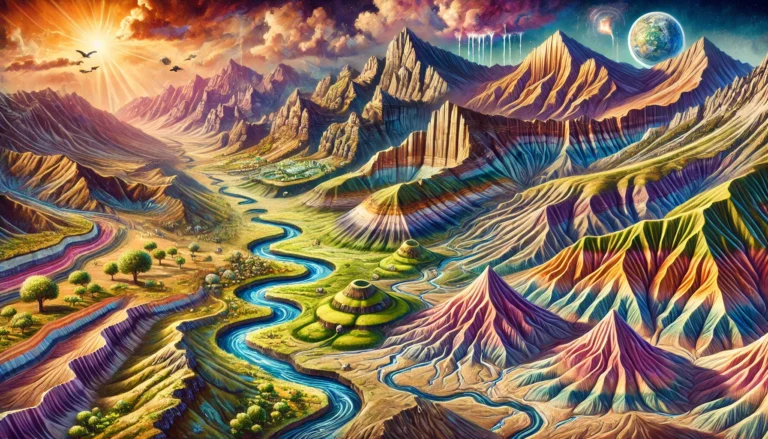Dravidian Rock System
Imagine standing on the mighty Himalayas, gazing at the towering peaks, and realizing that some of the rocks beneath your feet hold fossils of creatures that lived over 300 million years ago! Welcome to the Dravidian Rock System, a geological archive that preserves the ancient history of Earth’s life and landscapes.
What is the Dravidian Rock System?
📍 Age: 600 – 300 million years ago (Palaeozoic Era).
📍 Formation: Sedimentary deposits formed over vast periods when oceans and rivers covered the land.
📍 Location:
- Extra-Peninsular India (Himalayas and the Indo-Gangetic plains).
- Rare in Peninsular India (Don’t be misled by the name ‘Dravidian’—it’s not mainly in South India!).
📍 Significance: These rocks contain abundant fossils, helping geologists understand ancient life forms.
The Geological Timeline of the Dravidian Rocks
The Dravidian Rock System consists of rocks from five major geological periods:
- Cambrian (~541–485 million years ago)
- Ordovician (~485–444 million years ago)
- Silurian (~444–419 million years ago)
- Devonian (~419–359 million years ago)
- Carboniferous (~359–299 million years ago)
Among these, the Carboniferous Period is particularly significant due to its role in coal formation.
Carboniferous Rocks (The Coal Age: 350 million Years Ago)
📍 Composition: Limestone, shale, and quartzite
📍 Significance:
- The Upper Carboniferous limestones form the summit of Mount Everest! 🏔️
- The Carboniferous period is known as the “Coal Age”, as it saw the formation of extensive coal deposits.
- The word ‘Carboniferous’ literally means ‘coal-bearing’ in geology.
However, most of India’s coal does not come from Carboniferous deposits. Instead, the world’s best Carboniferous coal is found in:
- Great Lakes Region (USA)
- United Kingdom
- Ruhr Region (Germany)
💡 Did You Know? When climbers reach the summit of Mount Everest, they are actually standing on fossilized marine limestone from the Carboniferous period—meaning the highest point on Earth was once at the bottom of an ancient ocean! 🌊⛰️
Why is the Dravidian Rock System Important?
🔹 Preserving Ancient Life:
- Fossilized remains found in these rocks help scientists understand prehistoric marine and land ecosystems.
- Some of the earliest known plant and animal fossils are found in Dravidian rocks.
🔹 Economic Significance:
- These rocks contain high-quality limestone and quartzite, used in cement and glassmaking.
- Though Indian coal is mostly from later periods, studying Carboniferous rocks helps geologists explore coal reserves globally.
Conclusion
The Dravidian Rock System is a window into the ancient Earth, preserving the remains of marine life, early forests, and massive geological shifts. Whether it’s the fossilized corals of the Himalayas, the coal-rich history of the Carboniferous, or the ancient river deposits of the Indo-Gangetic plains, these rocks continue to whisper the stories of a world long gone but never forgotten. 🌍✨





